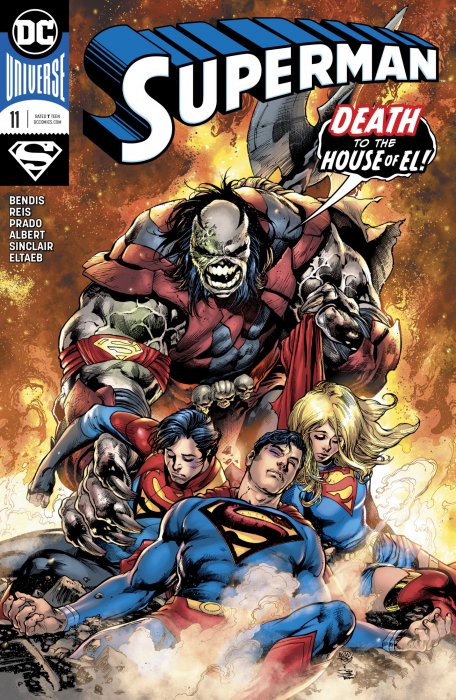
For example, "What If Spider-Man Joined the Fantastic Four" (What If (1977) #1) diverged from Amazing Spider-Man (1963) #1, when Spider-Man asked to join the FF and was rebuffed when they told him that they weren't paid for their FF membership. Marvel formalized the idea with their "What If" series, which created breakpoints in the Marvel Universe where thing diverged from what was portrayed in the regular stories.


"Whatever Happened to the Man of Tomorrow?" was a two part story in Superman (1939) #423 and Action Comics (1938) #583, which marked the end of the "Silver Age or Bronze Age" Superman, pending the John Byrne re-built and re-launched Superman in 1986, which featured a re-numbered Superman #1 after the Man of Steel (1986) six-issue mini-series which re-defined Superman for the 1980's and clarified and unified 50 years of continuity into a unified single history. Lois Lane (1958) #19 listed "#1 in an Imaginary Series" blurb on the cover. These were often "Superman marries Lois"-type stories, where the writers can play with the key characters without messing up the "real universe". I've liked the odd "DC Imaginary Story", which were a periodic DC gimmick to create "out of continuity" stories, primarily for the Superman family. This site is an attempt to make sense of the numbering issues. However, with other series, the effect was somewhat confusing (see Hulk).
#Son of superman cbr cbz series
Some re-numbering was simply the inclusion of series X and series Y of the same character, with the new numbering being the sum. Later, someone woke up and realized that they were missing the chance to capitalize on significant milestone issues (500, 600 etc.) and began to re-number the ongoing series, with mixed success. Marvel's marketing department, realizing that "#1" issues had extra purchase value, began randomly re-starting series to generate new #1's. This experiment lasted about a year from 1996 to 1997, where the characters were re-introduced into the "real" (616) universe of Marvel in "Heroes Return". Hulk, Avengers, Iron Man, Captain America and the Fantastic Four) to a group of artist/writers in the ill-fated "Heroes Reborn" period of about a year in the mid-1990's, each series being re-started as a new #1. Marvel had a mathematical psychotic break and sold off key characters (e.g. Superman (2006) re-merged Superman (1987) and Adventures of Superman (1987) to a single title.īoth DC and Marvel comics insisted on the occassional oddly numbered comic (0, -1 for Marvel, 1,000,000 for DC) which made continuity of numbering strange.
#Son of superman cbr cbz Offline
All Superman comics (Action Comics and Superman) were taken offline for a few months, and a re-launch re-started Superman (1987) with a new #1, and continued the pre-existing Superman (1939) numbering with "Adventures of Superman (1987)".

However, DC Comics started an inadvertent trend when John Byrne re-structured the Man of Steel in the mid-1980's. Occasionally there would be some complications when a series was re-named (often when a key character in an ongoing anthology becomes popular enough for their own title), such as "The Incredible Hulk (1968)" taking over the numbering from "Tales to Astonish (1959)" or "Captain America (1968)" taking over the numbering of "Tales of Suspense (1959)". Comic book numbering used to be a very simple issue - each issue was incremented one number from the preceding issue in a simple natural number sequence starting at issue #1 until infinity.


 0 kommentar(er)
0 kommentar(er)
